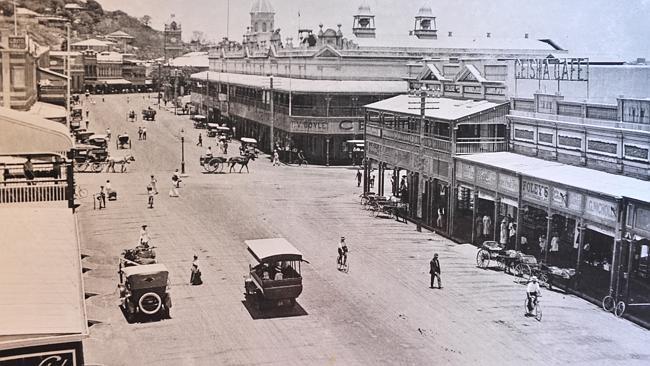Cowboys’ home town owes its existence to Sydney merchant Robert Towns
Townsville was founded by a Sydney entrepreneur who needed a port for his cowboys

Today in History
Don't miss out on the headlines from Today in History. Followed categories will be added to My News.
The NRL grand final-winning Cowboys put Townsville on the map. Or so it has been said by numerous pundits since Johnathan Thurston potted that golden point field goal on Sunday night.
In fact Townsville, and hence the Cowboys’ glory, owes much to the vision and support of the Sydney entrepreneur after whom the city was named.
Centuries before rugby league existed the area was home to the Bindal and Wulgurukaba and some of these indigenous Australians may have been watching as a ship sailed past in 1770. That ship was the Endeavour commanded by Lieutenant James Cook. It didn’t actually land so there was no confrontation and it probably left little impression on the locals.
Cook and his crew were charting the coast, naming land features including Magnetic Island (named because of the effect it had on the ship’s compass), as well as Cleveland Point and Cleveland Bay, named after Cook’s home region of Cleveland in Yorkshire.
While this work had no immediate impact on the indigenous people it did pave the way for the incursion of the British. The first British landed in 1819, when the Mermaid, commanded by Phillip Parker King, dropped anchor at Cleveland Bay while surveying parts of the coast missed by Matthew Flinders on his circumnavigation of Australia in 1802-1803.
In 1846 the barque Peruvian was shipwrecked on Horseshoe Reef, part of the Great Barrier Reef. Twenty-two people escaped in a jolly boat, but only five made it ashore. Another two died before the remaining three were adopted by Aboriginal clans living around Cleveland Bay. Within two years there was only one survivor, James Morrill, who became the first white resident of the area that would become Townsville.
Morrill lived with the indigenous people for 17 years. In 1863, as white settlement was pushing further north, he made contact with whites at a sheep station. Morrill became a celebrity and an adviser to others exploring the land where he had lived.
In 1864 Sydney-based merchant Robert Towns asked business partner John Melton Black, of Woodstock Station 100km southwest of Cleveland Bay, to look for a suitable coastal site for a port.
Towns was born in Northumberland, England in 1794 and had gone to sea on coal ships as a teenager, studying navigation in his own time to work his way up to commanding ships. He then later bought his own ships.
He made frequent trips to Australia and in 1833 married the daughter of D’Arcy Wentworth and in 1843 settled in Sydney. He eventually established his own shipping and trading company R. Towns & Co. and gathered extensive land holdings, expanding north into what officially became Queensland in 1859.
Towns and Black could see that establishing a port would be beneficial for cattle stations too far from Bowen, open the land for more cattle producers and give Towns’ ships a prime jumping-off point for the Pacific.
Black sent out Andrew Ball and Mark Watt Reid, along with two Aboriginal stockmen from Woodstock Station, early in 1864. Exploring Cleveland Bay in April they reported it as a suitable site and in November the first people arrived to begin work on establishing a port and a town.
Melton is believed to have been the first to build a house in the new settlement, which Towns and Black originally named Castletown after the granite monolith overlooking the town, known as Castle Hill.
In 1865 the first road giving access to the port was opened and the first parcels of land went on sale. Among the takers was Morrill, who was given a special price. Unfortunately his years living with the Aborigines had ruined his health and he died at Bowen in October 1865.
The town rapidly began to grow, thanks primarily to the ongoing financial support of Towns. It declared a municipality in 1866, and Melton was elected as the town’s first mayor.
Towns made a brief visit later that year, assuring the town of his continued support, and Castletown was renamed Townsville in his honour.
FAMOUS SONS AND DAUGHTERS
Townsville has other claims to fame outside of being home to the Cowboys. Golfer Greg Norman was educated there while Olympic swimmer Libby Trickett and rugby league stars Gorden Tallis and Gene Miles were born there.
It is also the birthplace of choreographer Natalie Weir and every year since 1991 Townsville has hosted the Australian Festival of Chamber Music.
Wikileaks founder Julian Assange was born there in 1971.
Originally published as Cowboys’ home town owes its existence to Sydney merchant Robert Towns



